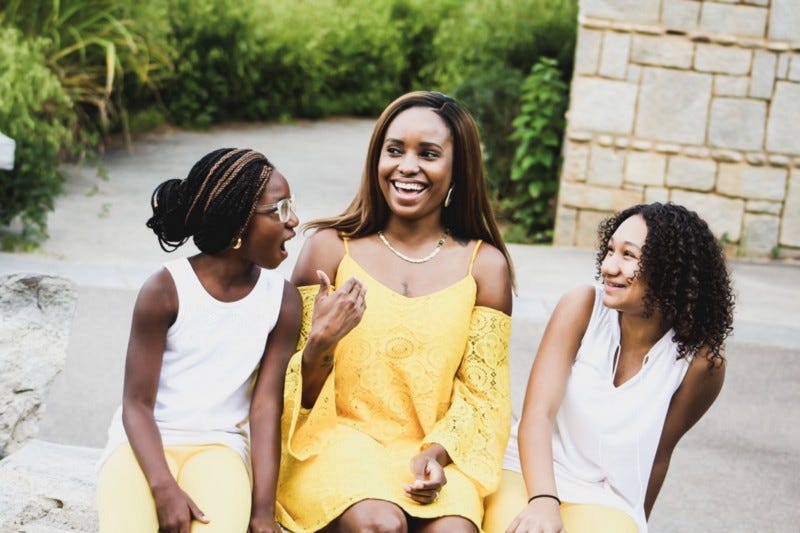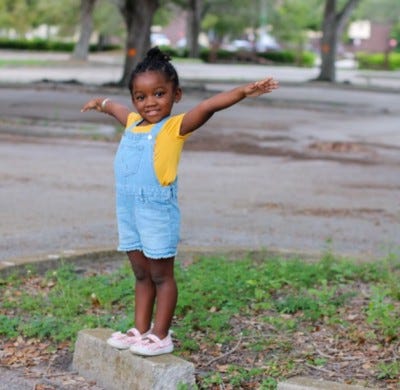Melanin talk: The simplest way to discuss race to youth
Explaining race and skin tones before racism can begin

Editor’s Note: This blog has been updated and the original version was published on Our Ancestories, the blog site for author Ekiuwa Aire, who has written “Njinga of Ndongo and Matamba” and “Idia of the Benin Kingdom: Workbook.”
“You burned your hands?” she asked me from the bleachers of a college football game.
“No, why?” I responded.
“Then why is it a different color from the other side?”
That was the first time I ever paid much attention to the fact that the dorsal aspect of my hand was a different color than my palm. When you’re born and raised in a predominantly African- American community, that’s not something you bother to pay attention to. And it was definitely the first time someone asked me about it.
The curious person who asked me was my college roommate’s younger sister — a white, rosy-cheeked little girl. I would’ve expected a question like this at my first college at Northern Michigan University, but not at my (now alma mater) HBCU Lincoln University.
ADVERTISEMENT ~ Amazon
As an Amazon affiliate, I earn a percentage from purchases with my referral links. I know some consumers are choosing to boycott Amazon for its DEI removal. However, after thinking about this thoroughly, I want to continue promoting cool products from small businesses, women-owned businesses and (specifically) Black-owned businesses who still feature their items on Amazon. As of the first date of Black History Month 2025, each new post will ALWAYS include a MINIMUM of one product sold by a Black-owned business. (I have visited the seller’s official site to verify that Amazon Black-owned logo.) I am (slowly) doing this with older, popular posts too. If you still choose to boycott, I 100% respect that decision.
I could tell she meant no harm from her question, but my roommate’s stepmother looked mortified. My roommate apologized immediately. Her father, who was within hearing distance, looked from me to the little girl on my lap. And that was when I realized two things: New York wasn’t the mecca of diversity that I thought it was (or at least Long Island clearly wasn’t, which was where they were from) and this family (all white) was definitely going to let me take the reins on this topic.
Recommended Read: “To white parents, one size does not fit all ~ Five tips for white parents trying to raise non-racist children”
My 19-year-old brain fumbled my way through what I knew about skin pigmentation and melanocytes while this little girl (who couldn’t have been more than nine or 10) listened. By the time I was done, she — who was holding my hand and remained on my lap — held up my fingers, looked at them slightly longer and responded, “OK.” And then she leaned back to rest her head on my shoulder.

On the other side of me, I could see my roommate’s parents breathing a sigh of relief. They went back to watching the rest of the football game. Meanwhile I half-glanced at the game but spent more time looking at my brown hands, far more interested in them than I ever was before.
Explaining how melanin works is easier than the race talk
I could’ve explained racism and prejudice and the Civil Rights Movement to this child. But that wasn’t what she asked me. She simply wanted to know about my hands and nothing more. I realized that was the easiest way to explain race to someone who is young enough that she hasn’t started forming stereotypical ideas about what each race is like.
I thought about that recently while reading Dave Smith’s “How Schools Can Help Neutralize Racism.” His first step in discussing race was to “teach all students about the chemical melanin.” Meanwhile I’d taken on this topic 20 years ago while dusting off everything I’d learned in biology class.
Recommended Read: “Simplest way to explain sexual consent (to men) ~ The generational argument between Boomers and Millennials about the meaning of ‘no’”
As much as I enjoy saying “black girl magic,” “melanin magic” and “melanin poppin’,” and singing along to Kelly Rowland’s “Coffee” and Beyonce’s “Brown Skin Girl,” that child’s question makes me feel a way. It’s nothing that she said.







